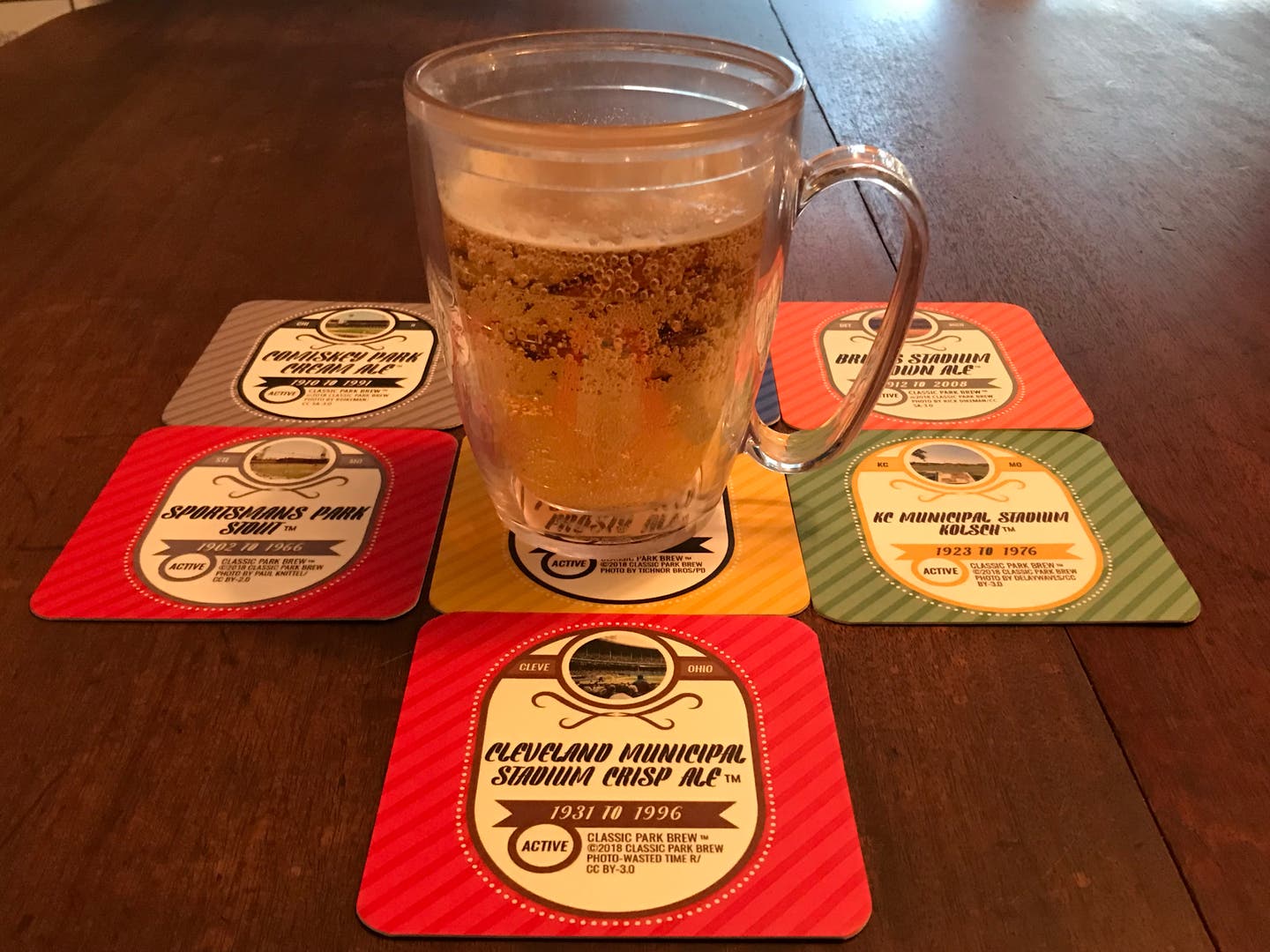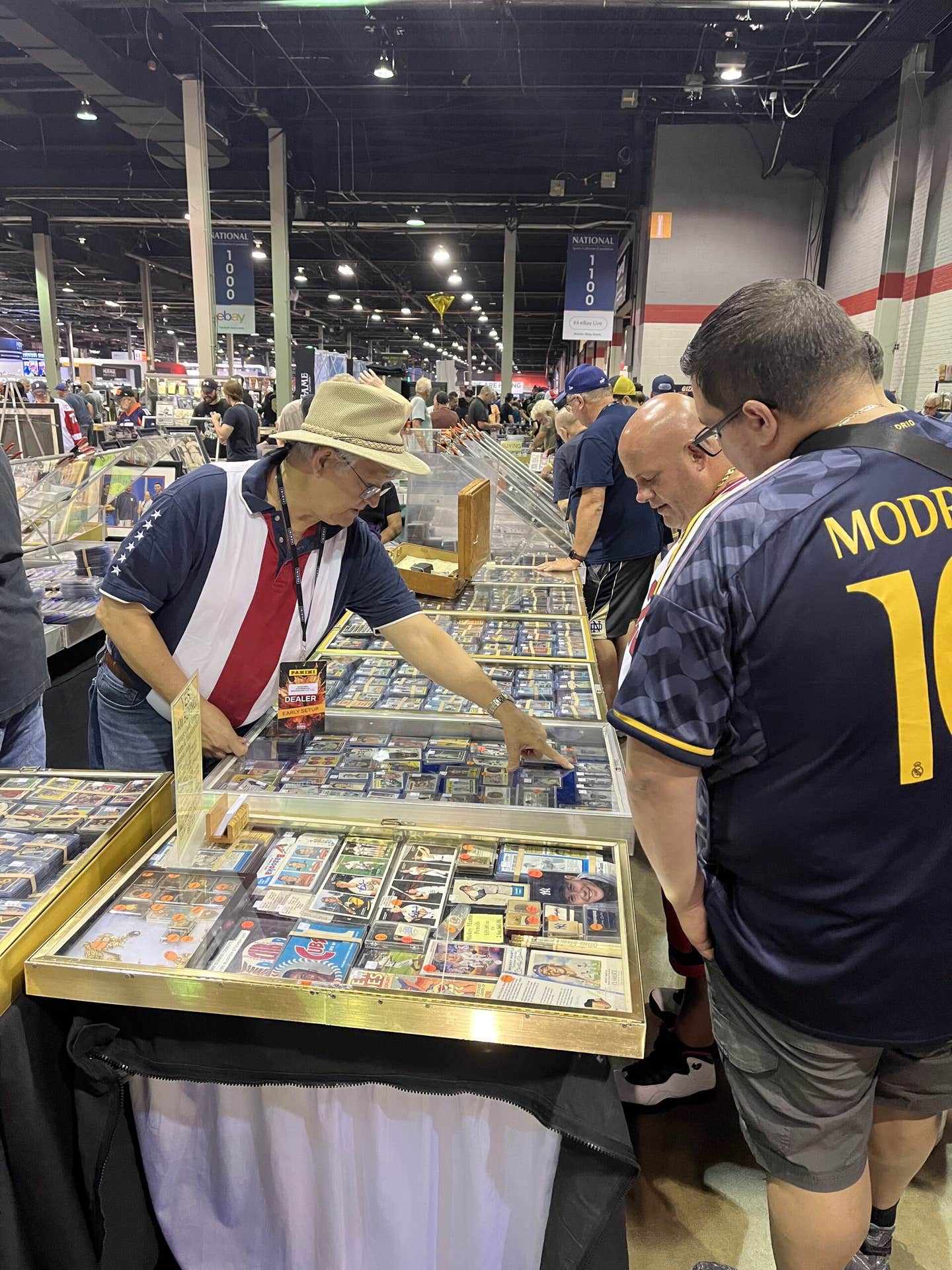
News
‘Beer Coasters, Getcha Beer Coasters Here’: Stadia lover combines brews and ballparks for unique baseball collectible
Who doesn’t love having a cold one at the ballpark? Beer and baseball have been intertwined since the game’s early days, and the major U.S. breweries are still among the National Pastime’s greatest sponsors. Two stadiums are even named after breweries.
That’s where Ken Finnegan comes in. A longtime baseball fan, Finnegan decided to combine his love for beer and talent for micro-brewing with his interest in ballparks to create a set of 24 really neat 4-by-4 beer coasters that can be purchased through his website at www.classicparkbrew.com. Finnegan has also created NFTs of his coasters that can be found at rarible.com by clicking here.
When he first contacted me about this novel idea, I was a bit skeptical. But Ken’s passion for Stadia, coupled with the attention to detail in his product, won me over. So, let’s find out how his “Suds and Stadia” enterprise came to be.
Give us a little background on your interest in baseball.
I am a native Long Islander but have spent the past 30 years living and working as an engineer in San Diego County, Calif. My oldest brother was a Mickey Mantle fan. Seven years later, I followed Thurman Munson. After the move to San Diego and the construction of Petco Park, I started to watch more National League baseball with the Padres, but my purist preferences had been well-established much earlier.
How did your focus gravitate towards Stadia?
Although I got used to living in San Diego, during my New York years I loved the idea of having Yankee Stadium or Shea Stadium to visit anytime I wanted. And I felt compelled to travel to the old Ebbets Field and the Polo Grounds sites to imagine what the excitement must have been like in the old days when there were three MLB teams in New York.
As a young guy in the mid-1970s I heard about famous ballparks being torn down, and witnessed their aftermath status. When these parks were demolished, a connection to the city they inhabited was lost. It was kind of sad to see television news reports showing a ceremony at places like housing projects that had replaced the green grass, seats, fans and carnival-like baseball events of yesteryear.
Also, my era saw the construction of many cookie-cutter stadiums that looked identical; the older ballparks, like Wrigley and Fenway, had their unique appearance that was dictated by the layout of the surrounding neighborhood. One had the impression that he was, in fact, watching a game from a neighborhood. This led me to read about and seek images of those classic parks. Color film footage of these old parks was hard to come by for me, but books provided some glimpses of them. Later, there came the Internet and there were more images to view.
By the early 1990s, at the beginning of my professional career, I had watched games at the Old Comiskey, Tiger Stadium, County Stadium, Memorial Stadium and Cleveland Municipal. I had even visited old demolition sites such as Connie Mack Stadium. I’ve enjoyed returning to Fenway and Wrigley numerous times and I’ve visited all of the California ballparks at least once.
How did you start collecting Stadia artifacts?
I come from a family of brick masons, and I know what to do with a trowel. Thus, it was fitting that when my brother showed me a souvenir shop up the street from the partially razed Old Comiskey in 1991, I purchased a white-painted Comiskey brick. This led me to hunt down a bunch of other bricks. Although conventional brick construction is rare these days, many of the old ballparks were at least brick-veneered, and these artifacts can still be found out there.
Along those lines, in 2014 I was passing by Wrigley while on a trip and they were doing some renovation on the façade. I was able to secure a concrete piece that had been pried loose from the Waveland Avenue wall. My collection has since expanded to some unrestored seats and other interesting fixtures. (Author’s note: The same ballpark façade experience occurred with me a few years ago when my wife and I were in Boston during the offseason. Some brick work was being done around one of the upper Fenway Park windows and I persuaded one of the officers guarding the site to let me get past the barriers and scoop up a few brick chunks, which I still have. The policeman thought I was nuts, of course.)
How did the Ballpark Beer Coaster idea come about?
The idea morphed from creating potential fantasy breweries with old ballpark names to an “art meets nostalgia” Warhol-like design that would feature information on a spotlighted ballpark, a photo of the park and a choice artifact from the place. Several years into the beer coaster idea, I registered trademarks for the beer flavors and created my website. There is now a complete set of 35 beer coasters that are both attractive and informative.
Describe a typical coaster’s design, besides the ballpark photo and artifact image.
When you first receive the coasters, you will notice the front has the term “active” and then the years “from” and “to.” This is basically the ballpark’s tombstone dates — when it was first built and when it was torn down. Then, the back of the coaster has an “open” and “closed” date. This is a little different. The “open” date is the same as the first “active” date, but the “closed” date is when a pro team stopped playing in it, and it basically became abandoned or severely repurposed, like when Crosley Field in Cincinnati became a car impound site from 1971-1972.
Likewise, Memorial Stadium in Baltimore has the “active” dates as 1954-2002, because in 2002, it was finally torn down. But the “closing” is 1997, when the NFL Ravens played the last pro game there and the stadium went dark. Overall, it’s a neat little history lesson on a cool-looking beer coaster.
Have there been any problems with obtaining artifacts to illustrate the various ballparks?
I have found the most difficult relics to acquire are from Houston’s Colt 45 Stadium and Baker Bowl in Philadelphia, so I’m still on the hunt for those. But it’s been fun finding the others. For example, I just worked out a swap with a Seattle metal recycling company for a numbered seat tag from the Kingdome. I know that place might not be considered “classic,” but it sure was quirky, so I included it in the set.
Can a collector purchase individual coasters, or only the set?
Individually, the coasters are $2.50. The complete set is $45. I’m not trying to make a ton of money here. It’s more of an extension of my hobby and a way to interact with other Stadia enthusiasts.
Will you produce actual brewed beers to accompany the coasters in the future?
For now, the flavors are strictly a home-brewing operation, with a few having been released in small batches to nearby outlets. But I am making some good local contacts and I’m constantly listening for advanced ideas. So, you never know.
Obviously, Ken’s ardor for ballparks of the past comes through in both his personal collection and his idea to preserve their memory in a unique collectible. So, if you’re looking for the perfect item to dress up your baseball man cave bar, check out his Classic Park Brew Collectible Coasters.
— Until next time, please stay seated! Readers can contact Paul through his author website www.paulferranteauthor.com.
You Also Might Like: Topps turning iconic '52 Mantle card into NFT








